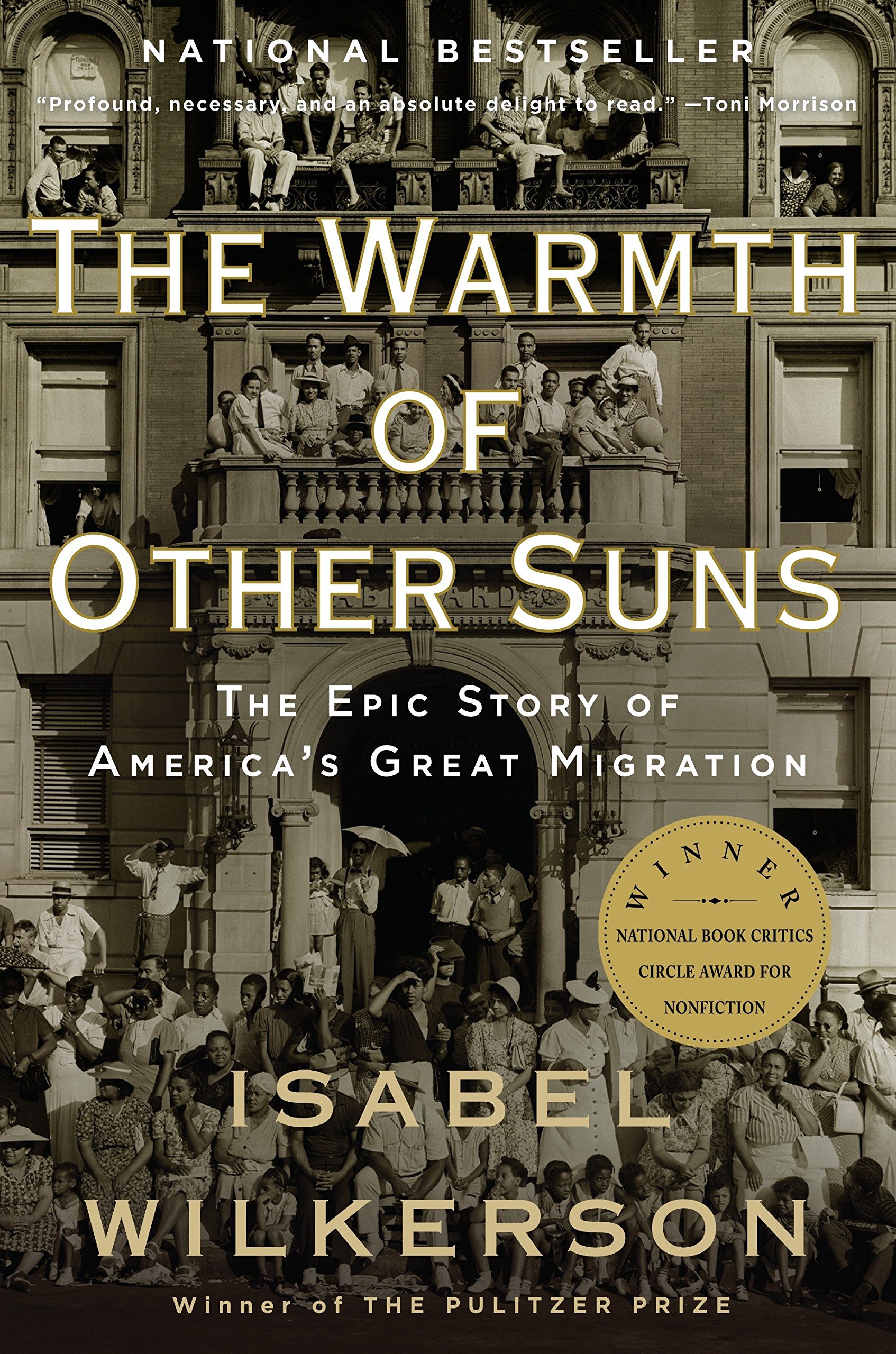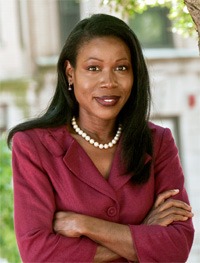The Warmth of Other Suns Summary
<1 min read ⌚
 The Epic Story of America’s Great Migration
The Epic Story of America’s Great Migration
For those of you who haven’t heard of the plight of African Americans in the South, this book summary will open your eyes.
We are not trying to demonize or discredit American achievement in any way, because even today it’s probably the most progressive country on a global scale.
That being said, America’s Migration leaves a stain on 20th– century politics and serves as a reminder for future generations.
Who Should Read “The Warmth of Other Suns”? And Why?
We implore readers from various religious, racial and national backgrounds to give this book a shot. We enjoyed while reading it because it makes you aware of what should not be espoused – ever.
In other words, “The Warmth of Other Suns” is an all-encompassing book whose implications throw light upon many questionable policies enacted or subtly promoted by the government.
We believe it will benefit the wider audience.
 About Isabel Wilkerson
About Isabel Wilkerson
Isabel Wilkerson is a prominent journalist and American author who received many accolades for her work.
She obtained her college degree from Howard University has been rewarded the Pulitzer Prize in journalism!
“The Warmth of Other Suns PDF Summary”
The Warmth of Other Suns unearths the main events which led to American’s Great Migration and reshaped society. Isabel Wilkerson bends over backward to deliver us a glimpse of the truth behind Southern Blacks’ resettlement in the northern and western regions of the country.
Why were they actually fleeing North?
Let’s take it one step at the time, and go back to where it all started.
It is safe to say that – The Great Migration commenced in 1915 and waves of migration continued to crop up until the 1970s. It’s said that the main trigger for this mass exodus is in line with the stirred up racial tensions toward Blacks in the southern regions.
As of the 1970s, the racial hostility began to alleviate, and that officially ends the racial drought that was tearing America apart.
In recent time, it has been estimated that approximately six million Blacks Southerners left their life and belongings behind to escape from Jim Crow’s reach in that 60-Year Time Frame. The journey to the north was instigated by oppressive behavior toward African-Americans and racial impatience brewing in the South.
It’s needless to say that no one can accurately point out the number of migrants who decided to abandon their shelters and head North.
To some extent, even the six-million figure is questionable, and it might be even higher since many of them preferred to travel at night to avoid unnecessary quarrels with the locals.
No official reporting is kept.
Isabel Wilkerson is the grand-daughter of a woman who was actually involved in this mass migration. As the second-generation of a black migrant who moved north, she is able to depict with almost surgical precision how Jim Crow’s laws affected her community.
At that time, the North was seen as a way out. Fleeing for a better and more playful life was probably the only instigator of this process.
Part one starts with the following quote:
Our mattresses were made
of corn shucks
and soft gray Spanish moss
that hung from the trees.…
From the swamps
we got soup turtles
and baby alligators
and from the woods
we got raccoon,
rabbit, and possum.
From an early age, Wilkerson picks up countless stories that portray the harsh treatment bestowed upon Blacks in the South. She starts to understand why so many people had little choice but to abandon their houses and embark on a perilous journey.
In the meantime, she ponders about the difficulty of leaving everything behind including your friends, family, childhood memories, passion, etc. Many of the escapees referred to it as the foreign land; they felt like they’ve been driven out of it with harmful policies.
Upon settling in the North, they were compelled to deal with the cold and new climate among other things. The Civil Rights Act signed in 1964 conferred rights to Blacks, and other minorities who were neglected and their voice was silenced.
Nonetheless, no one actually believes that a piece of paper can so easily eliminate all that’s been built up until that point. As a matter of fact, It took at least a decade for things to cool off.
People in the North had those weird accents and strange diet, so it took the Blacks a while before they caught up on the new way of life. They did, however, find general acceptance, and more opportunities to explore and exploit.
Homesickness turned out to be a big problem because they weren’t inured to the freezing temperatures and changeable weather.
Now, let’s focus on the book’s narrative!
In the spotlight, Isabel puts three persons whose lives are entwined with her story: Ida Mae Brandon Gladney, George Swanson Starling, and Robert Pershing Foster.
Ida Mae Gladney along with her husband, George, and their two young children decided to flee from the cotton fields of Chickasaw County, Mississippi, advance through Milwaukee while hoping to settle in Chicago.
She chose to abandon the harsh life in 1937 when a mob lynched her cousin under false accusations – that he stole a turkey. Her main goal was to leave the backbreaking work on the cotton fields in pursuit of a better life. In Chicago, she found peace and harmony.
George Swanson Starling obtained a college degree and was an agricultural worker in Florida who demanded better pay for the workers. He organized a strike against the land-owners and risked being beaten up to death.
To save his life, he fled from Florida and moved to Harlem, New York City. He found a job there as a train porter and was involved in mass protests for better rights. Even though he was bullied and harassed for his rhetoric against racial oppression, he managed to endure thanks to his deep faith in God.
Dr. Robert Pershing Foster was forced to leave Louisiana after no hospital in the South wanted to give him a staff position. Despite being a renowned surgeon in the U.S. Army forces, he struggled to find a job and decided to try his luck elsewhere.
The voyage to Los Angeles was filled with unpleasant encounters, as he roamed around to find a room where he could spend the night in. Anyway, he fulfilled his high-minded ambitions by becoming a renowned doctor and a personal physician to Ray Charles.
The immigrants who decided to escape to the urban areas in the North and West discovered that the brutal reality might shatter their dreams. The hopes of living the American dream were fueled by higher wages which didn’t come absent additional cost.
Even though Jim Crow laws were not officially enforced, racial hatred & bigotry still existed. The subtler form of racism infiltrated all tiers of American society, but it was a good consolation prize for the Blacks at the time since the South was way worse.
The 1964 Act which granted better rights to Blacks was partially enforced and accepted in the country.
The South was lagging in all areas, including racial tolerance and the Civil Act didn’t trigger an immediate alteration.
As you all probably know, the act was signed by President Lyndon Johnson after the Civil Rights Movement reached a nation-wide dispute. It was made illegal for a person (of color) as referred to back then, to be discriminated by an employee or service-provider based on race.
In practicality, the law still had some loopholes which the land and business owners used to circumvent the Act. It was easy to fictionalize the reasons behind disapproval or rejection of blacks but as time went by the situation for African-Americans started to improve.
The system didn’t go down without a fight, and Martin Luther King was quite aware of that. We all like to believe that all migrants made headway in their journey North, but that’s far from the truth. Some were forced to go back and deal with the problems in the community.
Despite the obstacles which seemed insurmountable at given times, the spirit of African-Americans remained intact.
Their determination to have a piece of the American dream made them stronger as they continue to thrive in sports, science, entertainment, etc.
It’s a struggle for the upcoming generations; it’s a struggle for worldwide prosperity!
Key Lessons from “The Warmth of Other Suns”
1. Promote tolerance among all races
2. Don’t trust organizations which prefer one race over the other
3. Read and educate yourself
Promote tolerance among all races
These days you’ll witness a lot of false narratives which on the surface give the impression of harmonious agendas, but in truth they still instigate segregation.
Move away from them and find the strength in your heart not to judge a person based on its skin color or whatever.
Don’t trust organizations which prefer one race over the other
Countless venal politicians use certain social groups to promote their agenda while making them dependent on government welfare.
Subdue the urge to be a part of the mob, and think on your own. Be skeptical about everything the media portrays as “noble.”
Read and educate yourself
It goes without saying that ignorant people don’t read and have no inclination to expand their horizons.
Don’t trust what others are saying – explore, dive, scrutinize every little aspect, and you’ll often find fabricated data and truths.
Like this summary? We’d Like to invite you to download our free 12 min app, for more amazing summaries and audiobooks.
“The Warmth of Other Suns Quotes”
It occurred to me that no matter where I lived, geography could not save me. Share on X That's why I preach today. Do not do spite, Share on X And more than that, it was the first big step the nation's servant class ever took without asking. Share on X Contrary to modern-day assumptions, for much of the history of the United States—from the Draft Riots of the 1860s to the violence over desegregation a century later—riots were often carried out by disaffected whites against groups… Share on XOur Critical Review
History cannot and should not be fabricated, for the sake of new generations. We mustn’t turn a blind eye on the painful past, but remain vigilant and tackle the inequalities which plague the society.
The truth behind the mass migration should serve as a reminder to every nation, to every race, to every people, that indulging in violence is a self-destructive mechanism.
We hope that good-hearted people will draw out the positives from this book!
Emir is the Head of Marketing at 12min. In his spare time, he loves to meditate and play soccer.


 The Epic Story of America’s Great Migration
The Epic Story of America’s Great Migration About Isabel Wilkerson
About Isabel Wilkerson




